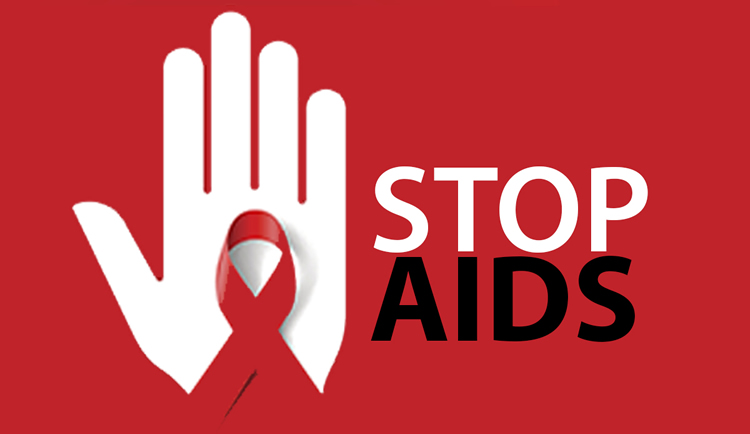Stigma, Shame And Scourge Of HIV In Ghana
- Home
- Stigma, Shame And Scourge Of HIV In Ghana

Stigma, Shame And Scourge Of HIV In Ghana

“I was scared for my life and my unborn baby. His actions made me lonely and desperate to leave,” those were the rather poignant words of Akosua (not her real name) as she narrated her experience of abuse after her HIV diagnosis.
Recounting her ordeal, the 27-year-old said she had endured agonizing pain with unending anger not knowing where to turn as she felt trapped in an abusive marriage – something which began only a few weeks after she tested positive. She found out after an Antenatal Care (ANC) session.
Like Akosua, many HIV-infected pregnant women experience violence – physical and emotional abuse – attributable to the positive status disclosures they make to their partners after they were diagnosed through prenatal screening.
For Akosua, her emotional abuse included being degraded, ridiculed, criticised, blamed and insulted coupled with a range of controlling behaviours by her husband, and this interfered with her medical care engagement, self-care behaviours, and efforts to get social support during her pregnancy.
New HIV infections
The prevalence of HIV in the country has shown significant variation across age groups as recent figures show an alarming increase in new infections among pregnant women.
The UNAIDS, an organisation leading the global effort to end AIDS as a public health threat, estimates that 1.5 million people became newly infected with HIV in 2020.
According to the Ghana Aids Commission’s data from the 2020 HIV Sentinel Survey, an estimated number of 18,928 new infections were recorded with 15,245 adults and 3,683 children. Out of the number, 12,443 of them were females – a number of them pregnant women.
Since the first case of HIV in 1986, there are currently 346,120 people living with HIV as at the end of 2020 with 317,410 being adults and 28,170 children. Out of the number, 229,755 are females representing 66 per cent.
Also, in 2020, of the 5,211 new infections which occurred among the 15-24 age group, 4,348 representing 83 per cent occurred among females.
Dr Stephen Ayisi Addo, Programme Manager, National AIDS/STI Control Programme, told the Ghana News Agency that with the current trends of HIV infections in the country, there was need for heightened education at all levels in order to nip the phenomenon in the bud and safeguard the younger population.
Surge in HIV cases among pregnant women
The National AIDS/STI Control programme indicates that there is a surge in cases of HIV among pregnant women in the country attributable to the increased confidence in fertility among persons living with HIV.
Data analysis in the 2020 HIV Sentinel Survey (HSS) reveals that women who had been pregnant more than once had a higher prevalence compared to first pregnancies partly because of their confidence that they could have healthy babies.
The study shows that the median Antenatal Care (ANC) HIV prevalence for 2020 was two per cent, and among those with Sexually Transmitted Infections (STIs) such as chlamydia, gonorrhea, syphilis among others, was 10 per cent out of a total HIV population of 18,928 in 2020.
The Prevention of Mother-to-Child Transmission of HIV (PMTCT) intervention is an integrated health service intervention which is offered to mothers and their children to reduce the risk of HIV transmission from the mother to the infant, protect them from HIV-related risk, enhance early case detection and treatment of those infected and to keep those who are HIV negative uninfected.
Dr Ayisi Addo said, Mother to Child Transmission of HIV (MTCT) could occur during pregnancy, labour, delivery and breast feeding and interventions required for prevention were aimed at dealing with risk factors during these periods.
However, according to the 2020 HSS, 17,694 mothers needed PMTCT, but only 12,668 of them were actually receiving PMTCT. The 5,026 unmet need for PMTCT could be attributable to some factors including stigma, discrimination and cultural impedes access to and utilization of services.
Abuse of HIV-positive women
Pregnancy represents a time of increased risk for intimate partner violence and an HIV diagnosis further increases the vulnerability of at risk-groups.
Dr Ayisi Addo disclosed that the National AIDS/STI Control Programme (NACP) had identified some levels of violent abuse of pregnant women who test positive for HIV by their husbands.
As part of a National Policy, all pregnant women who go for Antenatal Care (ANC) services are mandatorily tested for HIV and this has led to a number of positive diagnoses over the years.
He said: “After the women undergo testing and they inform their husbands, they are physically assaulted and others thrown out of their marital homes, and this is clearly a form of abuse, discrimination and stigmatization.”
That, he explained, had accounted for the nondisclosure of the HIV status by some women to their spouses because of the abuse usually meted out to them and the situation had resulted in HIV shame and stigma and had adversely affected engagements in HIV care and treatment behaviours.
The phenomenon further highlights the challenges women like Akosua face in navigating disclosures of their status, accessing the necessary support and engaging in both HIV-related and pregnancy related care particularly in abusive relationships.
Global call to action
HIV remains a major public health issue that affects millions of people worldwide. Although the world has made significant progress in recent decades, important global targets for 2020 were clearly not met.
Division, disparity and disregard for human rights are among the failures that allowed HIV to become and remain a global health crisis.
This year, World AIDS Day, on the theme, “End inequalities. End AIDS”, highlights the urgent need to end the inequalities that drive AIDS and other pandemics around the world, and without bold action and collective efforts by all, the 2030 target to end AIDS will also be missed.
The UNAIDS, an organisation leading the global effort to end AIDS as a public health threat by 2030 as part of the Sustainable Development Goals, says tackling inequality is a long-standing global promise and central to ending AIDS to advance the human rights of key populations and people living with HIV.
Ending inequalities requires transformative change. Political, economic and social policies need to protect the rights of everyone and pay attention to the needs of disadvantaged and marginalized communities and individuals like Akosua, who through no fault of hers, contracted HIV leading to her abuse by a man who probably infected her with the virus.
Intensified preventive education is key
Education is critical to the success of the overall AIDS response, and this, UNESCO Global Coordinator for HIV and AIDS, Chris Castle, says “can help learners to not only develop and maintain safer behaviours, but also reduce stigma and discrimination towards people affected by, and living with, HIV.”
Exploring the mechanisms of culture, values and beliefs has become more prominent, and even more vital is acknowledging that education and health are inextricably linked. HIV education can help to tackle some of the structural drivers of the virus such as harmful gender norms, which can increase the vulnerability of women and girls.
Dr Ayisi Addo admits that “the traditional aspect of the whole conversation should be looked at critically as some traditions and cultures make it easy for young girls to be betrothed as child brides.”
Also, in managing men who most likely transmit the virus to the females, most of whom may be innocent, there is a need to develop programmes on prevention education specifically targeted at men to stem the tide. Nothing can be left to chance.
Again, in order to reduce the 12,758 AIDS deaths as estimated in 2020, preventive education must be intensified at all levels to protect the younger population who are at risk of contracting HIV because they are unabatedly sexually active.
Achieving zero new infections, ultimately, will require effective and combined prevention and holistic approach, including intensive behavioural strategies in the general populations, but also in areas with higher prevalence.
Society must also make shelters for the likes of Akosua where they can recuperate from the physical and emotion abuse they have endured. It will not only show love and care but also reduce the tendency for such people to pay back society for the very reasons of their isolation, condemnation and contempt.
After all, HIV infection is not a death sentence.
By James Amoh Junior
Source: GNA
Classic Ghana
Classic Ghana brings you into a fun world of arts, entertainment, fashion, beauty, photography, culture and all things in between. Let’s explore these together!


